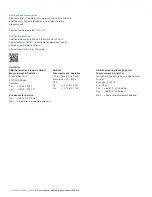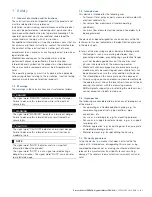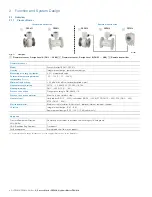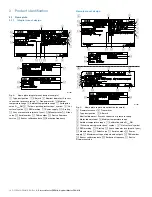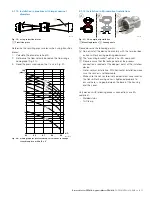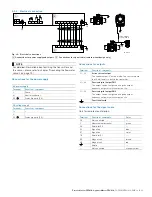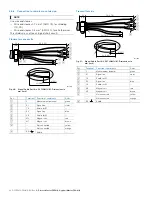
ProcessMaster FEP610, HygienicMaster FEH610
| OI/FEP610/FEH610-EN Rev. B 13
5
Installation
5.1
Installation conditions
5.1.1
General information
The following points must be observed during installation:
— The flow direction must correspond to the marking, if
present.
— The maximum torque for all flange screws must be
complied with.
— Secure the flange bolts and nuts against pipe vibration.
— The devices must be installed without mechanical tension
(torsion, bending).
— Install flange devices / wafer-type devices with plane
parallel counterflanges and use appropriate gaskets only.
— Only gaskets made from a material that is compatible with
the measuring medium and measuring medium
temperature may be used.
— Gaskets must not extend into the flow area, since possible
turbulence could influence the accuracy of the device.
— The piping may not exert any inadmissible forces or
torques on the device.
— Make sure temperature limits are not exceeded operating
the device.
— Vacuum shocks in the piping should be avoided to prevent
damage to the liners (PTFE). Vacuum shocks can destroy
the device.
— Do not remove the sealing plugs in the cable glands until
you are ready to install the electrical cable.
— Make sure the gaskets for the housing cover are seated
correctly. Carefully gasket the cover. Tighten the cover
fittings.
— The transmitter with a remote mount design must be
installed at a largely vibration-free location.
— Do not expose the transmitter and sensor to direct
sunlight. Provide appropriate sun protection as necessary.
— When installing the transmitter in a control cabinet, make
sure adequate cooling is provided.
— In case of a remote mounted transmitter make sure that
the sensor and the transmitter have been assigned
correctly. Compatible devices have the same end
numbers on the name plate, e.g. flowmeter sensor X001
belongs to transmitter Y001 or flowmeter sensor X002
belongs to transmitter Y002.
5.1.2
Brackets and supports
NOTE
Potential damage to device!
Improper support for the device may result in deformed
housing and damage to internal magnet coils.
Place the supports at the edge of the flowmeter sensor
housing (see arrows in Fig. 9).
Fig. 9:
Support for meter sizes larger than DN 400
Devices with meter sizes larger than DN 400 must be mounted
with support on a sufficiently strong foundation.
5.1.3
Gaskets
The following points must be observed when installing
gaskets:
— For achieve the best results, ensure the gaskets fit
concentrically with the meter tube
— To ensure that the flow profile is not distorted, the gaskets
must not protrude into the piping.
— The use of graphite with the flange or process connection
gaskets is prohibited, because an electrically conductive
coating may form on the inside of the meter tube.
Devices with a hard rubber, soft rubber liner
— Devices with a hard / soft rubber liner always require
additional gaskets.
— ABB recommends using gaskets made from rubber or
rubber-like sealing materials.
— When selecting the gaskets, ensure that the tightening
torques specified in chapter "Torque information" on
page 87 are not exceeded.
Devices with a PTFE, PFA or ETFE liner
— In principle, devices with a PTFE, PFA or ETFE liner do not
require additional gaskets.
G10649


